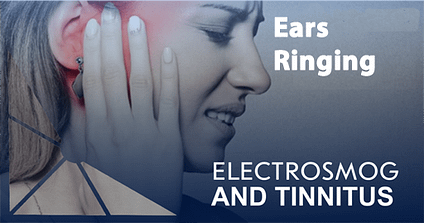Ringing in Ears Associated With electromagnetic fields (EMF)
admin 0 Comments Smart Meters
 There has been an ongoing debate, whether tinnitus might be related to exposure to electromagnetic fields (EMF) [13]. One previous study found a tinnitus prevalence of 14% in a sample of electromagnetic hypersensitive subjects [14]. Whereas electromagnetic hypersensitivity per se is not a proxy variable for EMF-exposure, substantial evidence from electrophysiological studies has shown EMF and especially mobile phone emissions to influence cognitive function [15] and neuronal processing in the central auditory system [16]–[20]. These might represent potential mechanisms by which EMF could contribute to the development of tinnitus. However, two recent epidemiological studies from a student and a the general population, respectively, did not demonstrate a significant relationship between mobile phone use and tinnitus [21], [22].
There has been an ongoing debate, whether tinnitus might be related to exposure to electromagnetic fields (EMF) [13]. One previous study found a tinnitus prevalence of 14% in a sample of electromagnetic hypersensitive subjects [14]. Whereas electromagnetic hypersensitivity per se is not a proxy variable for EMF-exposure, substantial evidence from electrophysiological studies has shown EMF and especially mobile phone emissions to influence cognitive function [15] and neuronal processing in the central auditory system [16]–[20]. These might represent potential mechanisms by which EMF could contribute to the development of tinnitus. However, two recent epidemiological studies from a student and a the general population, respectively, did not demonstrate a significant relationship between mobile phone use and tinnitus [21], [22].
Besides the hypothesized involvement in the generation of tinnitus, EMF-exposure has also been related to a variety of unspecific health symptoms (e.g., dizziness, fatigue, headache, sleep disturbances, etc.). Despite a huge amount of studies investigating the health impact of EMF, no clear relationship between EMF-exposure and these unspecific health symptoms could be established and the majority of provocation studies failed to demonstrate such a relationship [23]. Based on the fact that some individuals suffer from a variety of symptoms, which they attribute to EMF-exposure, whereas the overwhelming majority does not experience any symptoms under the same EMF-exposure, the concept of “subjective electromagnetic hypersensitivity” evolved [24]. This subjective electromagnetic hypersensitivity is characterized by health complaints, which interfere with daily living and are subjectively attributed to electromagnetic fields of named emission sources (e.g., mobile phone base stations, hot spots, TV-sets, etc.). Very recent data from an epidemiological case-control study suggest that this subjective electromagnetic hypersensitivity is characterized by dysfunctional cognitions, reduced discrimination ability for sensory stimuli [25] and increased sensitivity of a cortical network encompassing the anterior cingulate and insular cortex [26].
Due to the large sample size, the detailed clinical and neurobiological characterization and the control group, which was matched for age, gender and either living surroundings or workplace (as very rough proxies for EMF-exposure), this study population [25] was well suited to investigate the relationship between tinnitus, subjective electromagnetic hypersensitivity and EMF-exposure. In detail, we addressed the following questions: 1.) Do subjective electromagnetic hypersensitive people suffer more often from tinnitus than controls? 2.) Are there clinical characteristics that point to potential common pathological mechanisms?
Posted in Smart Meters